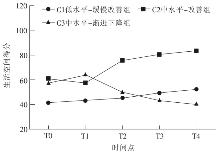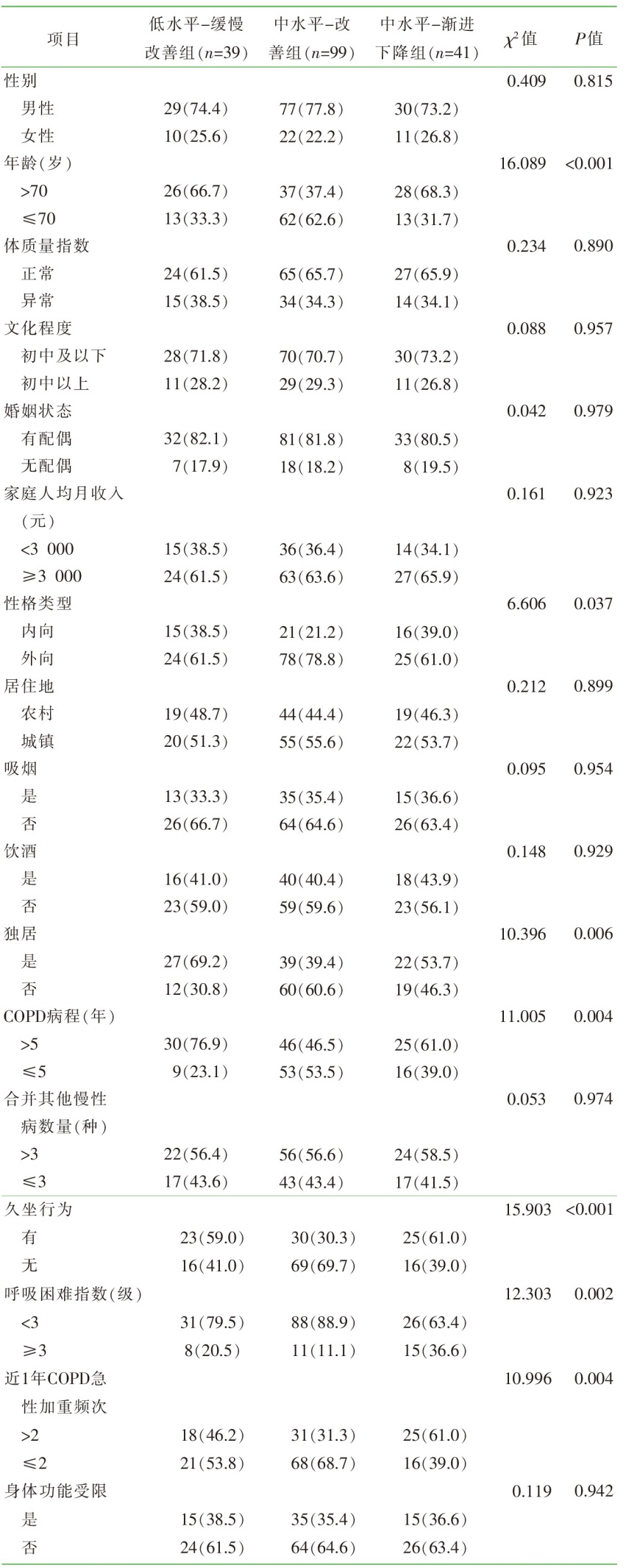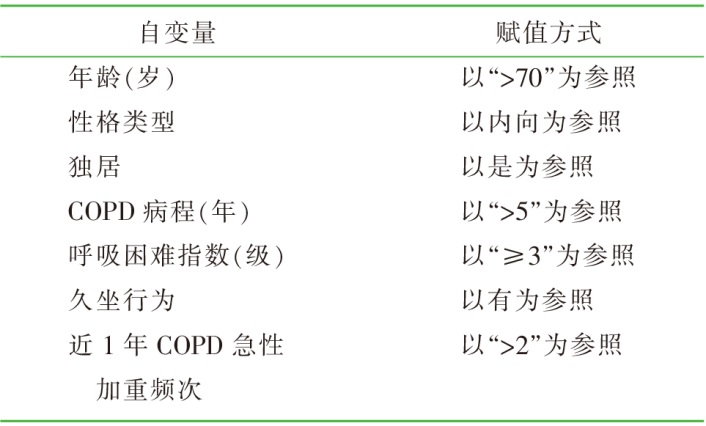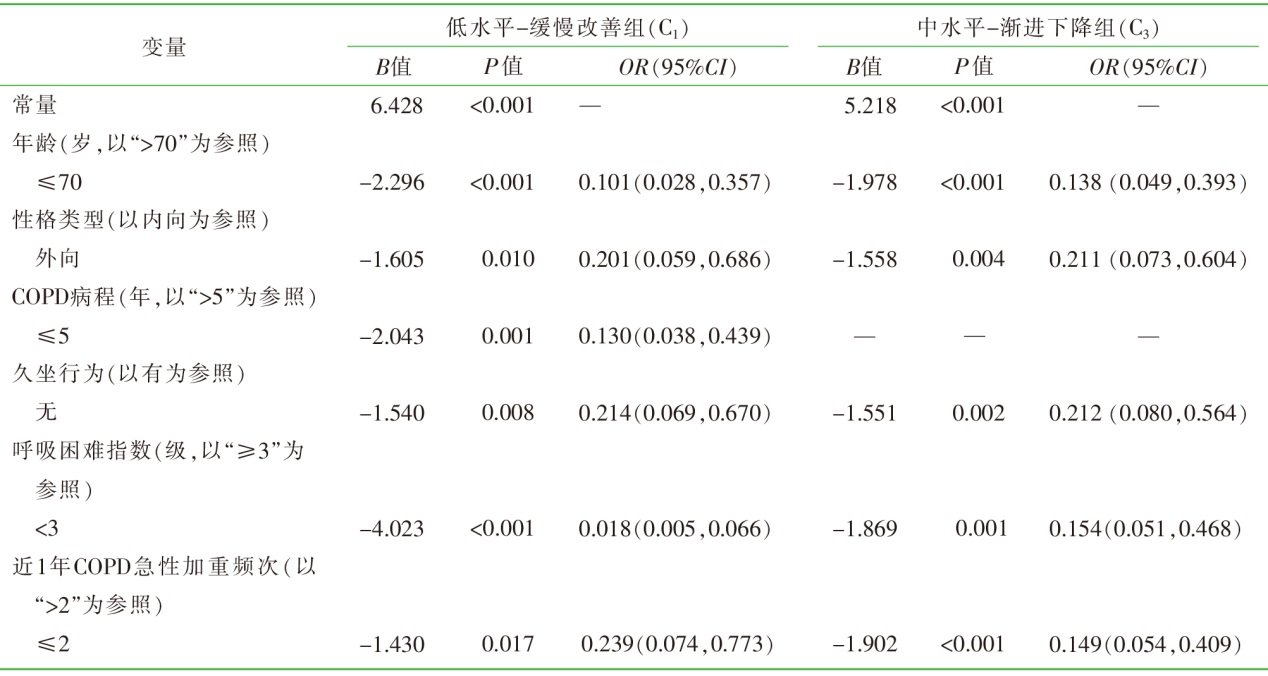| [1] |
宋敏, 隆秀辉, 燕娜娜. 老年缺血性脑卒中患者出院后生活空间现状及其影响因素分析[J]. 中国临床护理, 2024, 16(8):468-473.
doi: 10.3969/j.issn.1674-3768.2024.08.002
|
| [2] |
De Silva NA, Gregory MA, Venkateshan SS, et al. Examining the association between life-space mobility and cognitive function in older adults:a systematic review[J]. J Aging Res, 2019,2019:3923574.
|
| [3] |
Perracini MR, Lima CA, et al. Impact of COVID-19 pandemic on life-space mobility of older adults living in Brazil:REMOBILIZE study[J]. Front Public Health, 2021,9:643640.
|
| [4] |
Fasolino T, O’Hara S. Assessing SPACES in patients with chronic obstructive pulmonary disease helps identify unmet needs[J]. J Palliat Med, 2023, 26(1):149-152.
doi: 10.1089/jpm.2022.0178
|
| [5] |
任影, 于卫华, 张利, 等. 社区老年人生活空间水平现状及影响因素分析[J]. 护理学报, 2023, 30(7):11-15.
doi: 10.16460/j.issn1008-9969.2023.07.011
|
| [6] |
孙小卫. 老年慢性阻塞性肺疾病患者生活空间现状及影响因素研究[D]. 乌鲁木齐: 新疆医科大学, 2023.
|
| [7] |
王露佳, 王银萍, 乔晓笑, 等. 慢性阻塞性肺疾病病人运动恐惧研究进展[J]. 护理研究, 2024, 38(7):1228-1232.
|
| [8] |
Lech S, Mümken S, Kessler EM, et al. Life-space mobility among home-living older adults with care needs and clinical depres-sion-a cross-sectional analysis[J]. Int J Geriatr Psychiatry, 2023, 38(1):e5875.
doi: 10.1002/gps.v38.1
|
| [9] |
张海燕, 于卫华, 张利, 等. 2型糖尿病老年患者生活空间移动性受限风险预测模型研究[J]. 护理学报, 2023, 30(22):13-19.
doi: 10.16460/j.issn1008-9969.2023.22.013
|
| [10] |
An C, Wei R, Yao W, et al. Association of serum AFP trajec-tories and hepatocellular carcinoma outcomes after hepatic arterial infusion chemotherapy:a longitudinal,multicenter study[J]. Cancer Med, 2024, 13(11):e7319.
doi: 10.1002/cam4.v13.11
|
| [11] |
刘艳芳, 刘艳芹, 张俊霞, 等. 慢性阻塞性肺疾病患者体力活动的变化轨迹及影响因素[J]. 海南医学, 2025, 36(7):1038-1043.
|
| [12] |
中华医学会呼吸病学分会慢性阻塞性肺疾病学组, 中国医师协会呼吸医师分会, 慢性阻塞性肺疾病工作委员会. 慢性阻塞性肺疾病诊治指南(2021年修订版)[J]. 中华结核和呼吸杂志, 2021, 44(3):170-205.
|
| [13] |
李进, 杨惠敏, 李晓凡, 等. 食管癌放疗患者心理痛苦轨迹及其影响因素研究[J]. 中华护理教育, 2024, 21(10):1255-1263.
|
| [14] |
Ji MT, Zhou Y, Liao JL, et al. Pilot study on the Chinese version of the Life Space Assessment among community-dwel-ling elderly[J]. Arch Gerontol Geriatr, 2015, 61(2):301-306.
doi: 10.1016/j.archger.2015.06.012
|
| [15] |
Bestall JC, Paul EA, Garrod R, et al. Usefulness of the Medi-cal Research Council(MRC) dyspnoea scale as a measure of disability in patients with chronic obstructive pulmonary disease[J]. Thorax, 1999, 54(7):581-586.
doi: 10.1136/thx.54.7.581
pmid: 10377201
|
| [16] |
Guralnik JM, Simonsick EM, Ferrucci L, et al. A short physi-cal performance battery assessing lower extremity function:association with self-reported disability and prediction of mortality and nursing home admission[J]. J Gerontol, 1994, 49(2):M85-M94.
|
| [17] |
沈玉娟, 宋静, 周小蕾. 老年2型糖尿病病人生活空间移动性受限现状及其影响因素[J]. 循证护理, 2025, 11(14):2966-2970.
|
| [18] |
Ahn S, Springer K, Gibson JS. Social withdrawal in Parkinson’s disease:a scoping review[J]. Geriatr Nurs, 2022,48:258-268.
|
| [19] |
Johnson J, Rodriguez MA, Al Snih S. Life-space mobility in the elderly:current perspectives[J]. Clin Interv Aging, 2020, 15:1665-1674.
doi: 10.2147/CIA.S196944
pmid: 32982200
|
| [20] |
孙小卫, 王燕, 闵春燕, 等. 322例老年COPD患者生活空间现状及影响因素分析[J]. 护理学报, 2023, 30(8):1-6.
doi: 10.16460/j.issn1008-9969.2023.08.001
|
| [21] |
吴燕, 刘会英, 喻华. 慢性阻塞性肺疾病急性加重期病人生活空间受限预测模型构建与验证[J]. 全科护理, 2025, 23(2):209-214.
|
| [22] |
刘成成, 陈利群, 谢博钦, 等. 社区高龄老年人社会隔离现状及影响因素研究[J]. 护理学杂志, 2022, 37(13):98-102.
|
| [23] |
王亚旋, 陈湾湾, 宗丽. 老年高血压共病冠心病患者生活空间移动受限风险预测模型的构建和验证[J]. 心血管病防治知识, 2024, 14(21):118-124.
|







